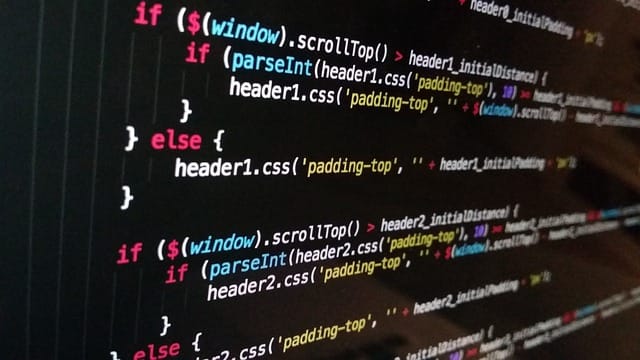Web developers are one of the most trending job profiles in software development in India. Full-stack developers are highly skilled and recognized in this profession as they are well-versed in the job roles and responsibilities of both front-end and back-end development.
Many employers would instead hire people with experience with both front- and back-end web development technology. So, if you want to do full-stack development in India as your full-time job, you need to know the basics of programming languages.
What is a Full-Stack Java Developer?
A full-stack Java developer builds spectacular websites for companies and startups. A website developer is in charge of every aspect of the site’s functionality, from the front end to the back end (the database and the servers). Therefore, taking a full-stack web developer course is the best way to acquire the foundational skills necessary to succeed.
Creating anything new may be divided into two distinct parts: the front end and the back end. This is because, without these two components, no application or website could ever be built.
Developers who focus on the “front end” of an application or website are called “frontend developers,” as they are responsible for the “what” and “how” of the user experience by creating the application’s or website’s wireframe, interfaces, and aesthetics. On the other hand, back-end developers are responsible for building the infrastructure on which front-end features rely.

One of the essential abilities of a full-stack developer is familiarity with database management systems like Oracle, MySQL, NoSQL, and PostgreSQL. The ability to store, create, manage, manipulate, and delete data, among other fundamental database operations, is required.
8 must-have skills to become a Full-Stack Java Developer
A bachelor’s degree in computer science or expert skills in web development are one of the criteria for moving along in the journey of being a full-stack developer. In-depth familiarity with a wide range of skills is essential. In addition, diversity is vital when it comes to becoming a successful full-stack developer.
To enhance your career, follow the tips mentioned below for a successful career as a full-stack developer in India:
1. Learn basic design
A full-stack developer focuses on both the front and back ends, so they should be proficient in basic design principles. Familiarity with front-end design is essential to ensuring a website’s visual appeal. Websites that are well-organized and simple to navigate always do well with visitors.
Therefore, full-stack developers should be familiar with design fundamentals, such as user interface and user experience design, prototyping, scalability, etc.
2. Master frontend languages: HTML & CSS
A software developer must be multi-talented when it comes to web application development. If you are on the path to career growth, you must be well-versed in languages like HTML and CSS.
Front-end frameworks are fundamental to attracting potential clients, as they are responsible for making interactive, intuitive, and engaging websites.
HTML: Front-end technologies often use Hypertext Markup Language, or HTML, as their lingua franca. Developers rely on it to control how text and graphics appear on a page. It decides how the different parts of the page, like headings, paragraphs, the main content, and pop-ups, are put together.
CSS, or Cascading Style Sheets, is a language for applying formatting to HTML components. For example, you can use CSS as a powerful customization tool to change the colours of your headings and paragraphs.
3. Backend languages
Languages like Python, Java, PHP, and Ruby are commonly used for back-end development.
- PHP – is an open-source, cross-platform language that works on Unix, macOS, and Windows.
- Python‘s- English-like syntax, easy learning curve, and broad array of modules and frameworks make it popular among developers and programmers worldwide.
- Ruby– is a powerful programming language. Its active developer community, comprehensive documentation, and dependencies make it perfect for backend development.
4. GitHub profile
You can learn about Git, the most well-known version control system, by taking a full-stack Java developer course.
Git facilitates the management of revisions to software, source code, web pages, documents, and other areas of the software development process. GitHub profiles are required for team-based developers. Learning GitHub is essential to managing speed and efficiency in small and large projects.
5. HTTP & REST
Hypertext Transfer Protocol (HTTP) is the underlying technology that allows for data exchange via the World Wide Web and is essential to the smooth functioning of many commonplace computer-based tasks. In addition, it manages dialogue between the client (web browsers) and servers through their respective request and response pairs (cloud).
REST, which stands for “Representational State Transfer,” is the de facto architecture standard for making it easy for systems to talk to each other. In addition to using HTTP for data collection and operation, it is also different. So, knowing REST well is important if you want to talk between the back and front ends.
6. Flexibility
Developers are responsible for reading their customers’ minds and delivering exactly what they want, while also providing customized solutions for each customer based on their specific requirements and the nature of their enterprise.
This is where practice plays an important role. The developers working on a full-stack mobile application or a full-stack web application look for innovative ways to make the finished product stand out from the competition.
7. Fundamentals of design
A development team is typically distinguished from a design team. However, being a multifaceted position, full-stack developers need a foundation in design to make their front-end work more visually attractive and user-friendly. This knowledge is invaluable when building the user interface (UI) of an application.
8. Soft skills
It is imperative to be people-friendly when managing a team. For example, a full-stack developer must be patient, have an open mind to ideas, be creative, and have an analytical mind.
Is full-stack development a viable career option in India?
Consistency, enthusiasm, and patience are vital for those interested in jumping into a full-stack programming profession. The job market for full-stack developers is expanding in India, and more and more professionals are upskilling themselves to make the most of the demand.
Though there are many online tutorials and study materials to understand full-stack development, the ideal way to prepare yourself would be to enroll in a full-stack development course. Course providers like Simplilearn offer online certification courses in India to get you ready to develop industry-ready applications.
Getting a solid foundation in Java’s fundamentals is important before moving on to more advanced topics like loops, arrays, and operators. The key is getting some experience to spot mistakes and correct them. From there, you can learn to code and make your own personal projects in any area of interest.











